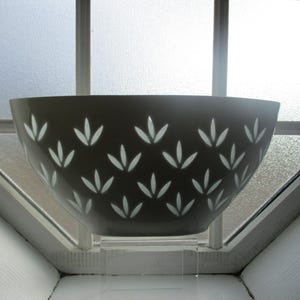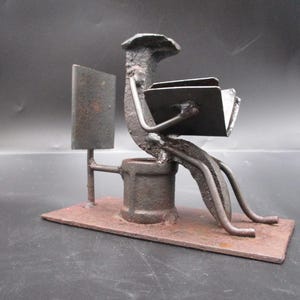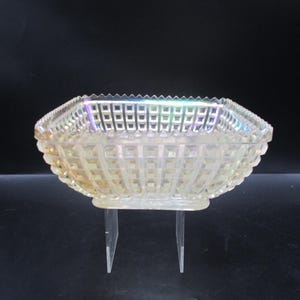
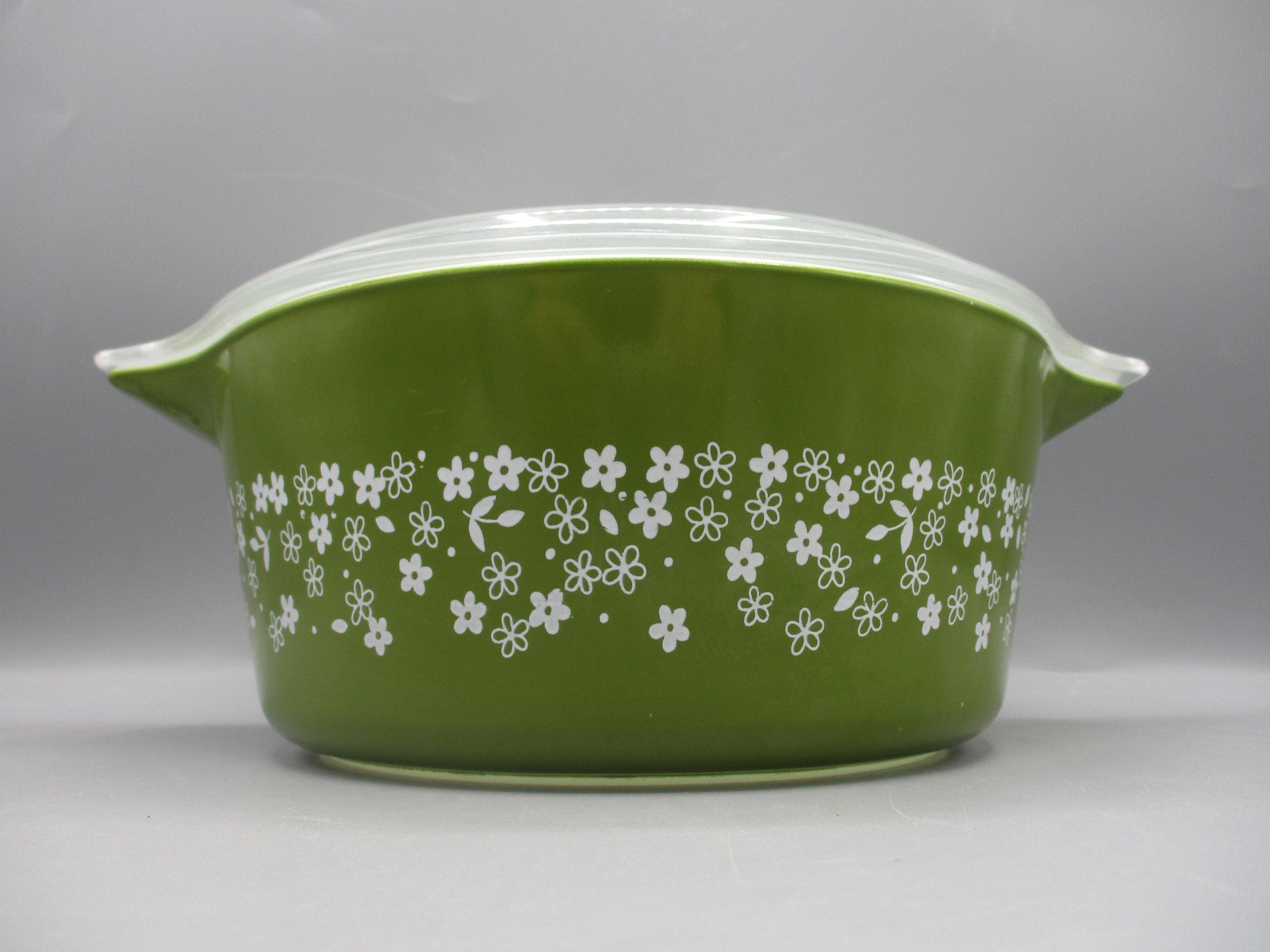
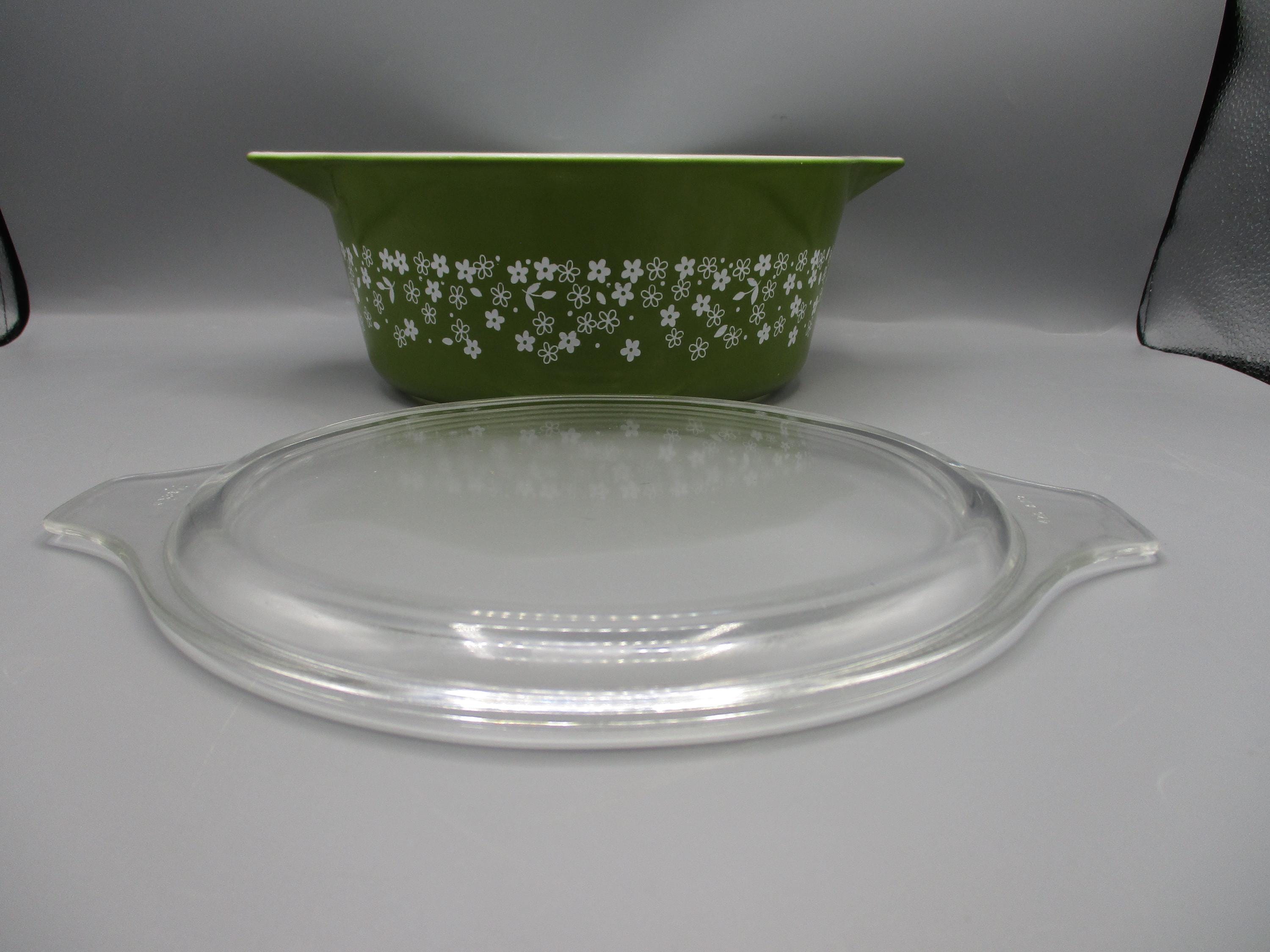
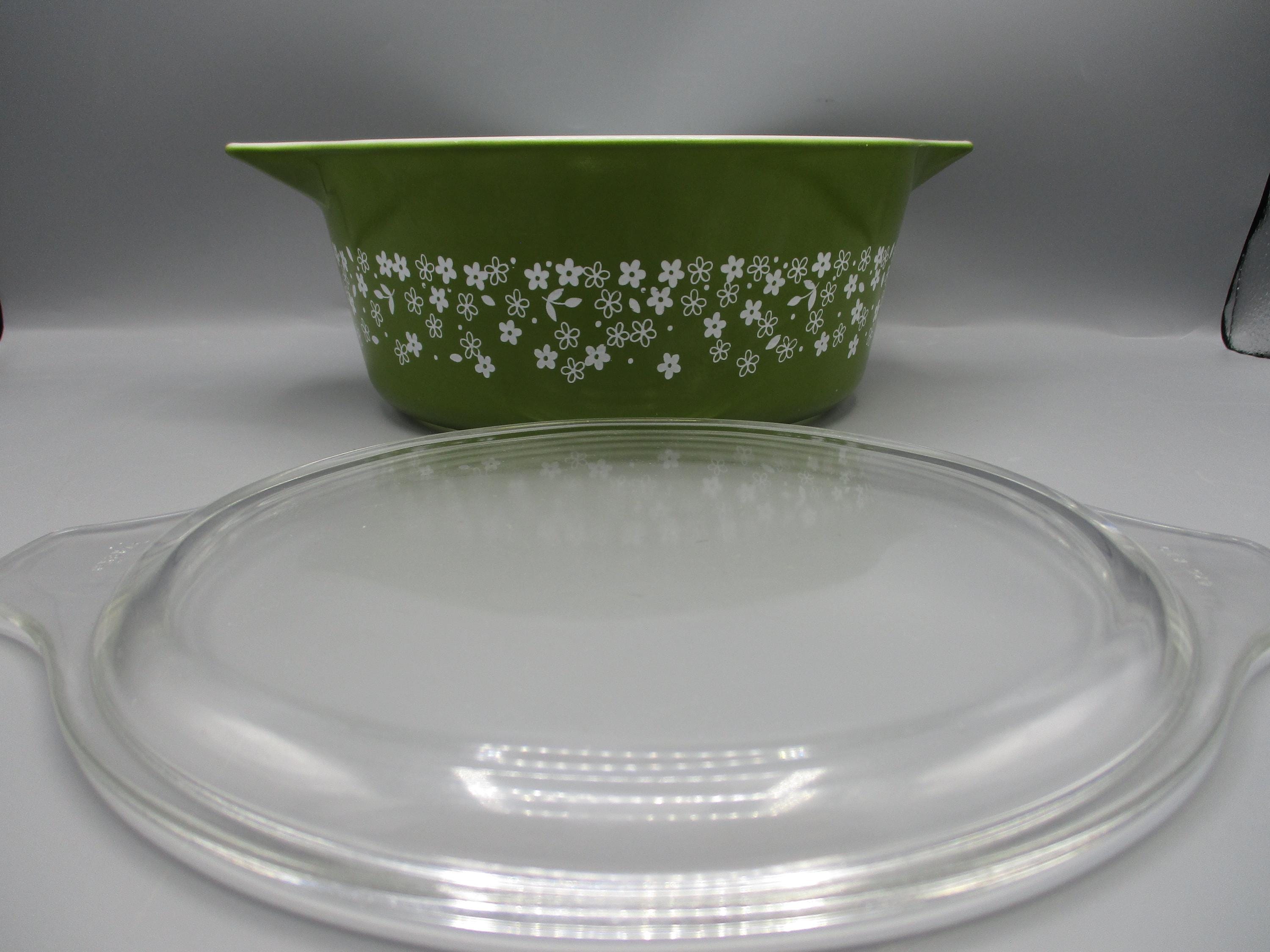
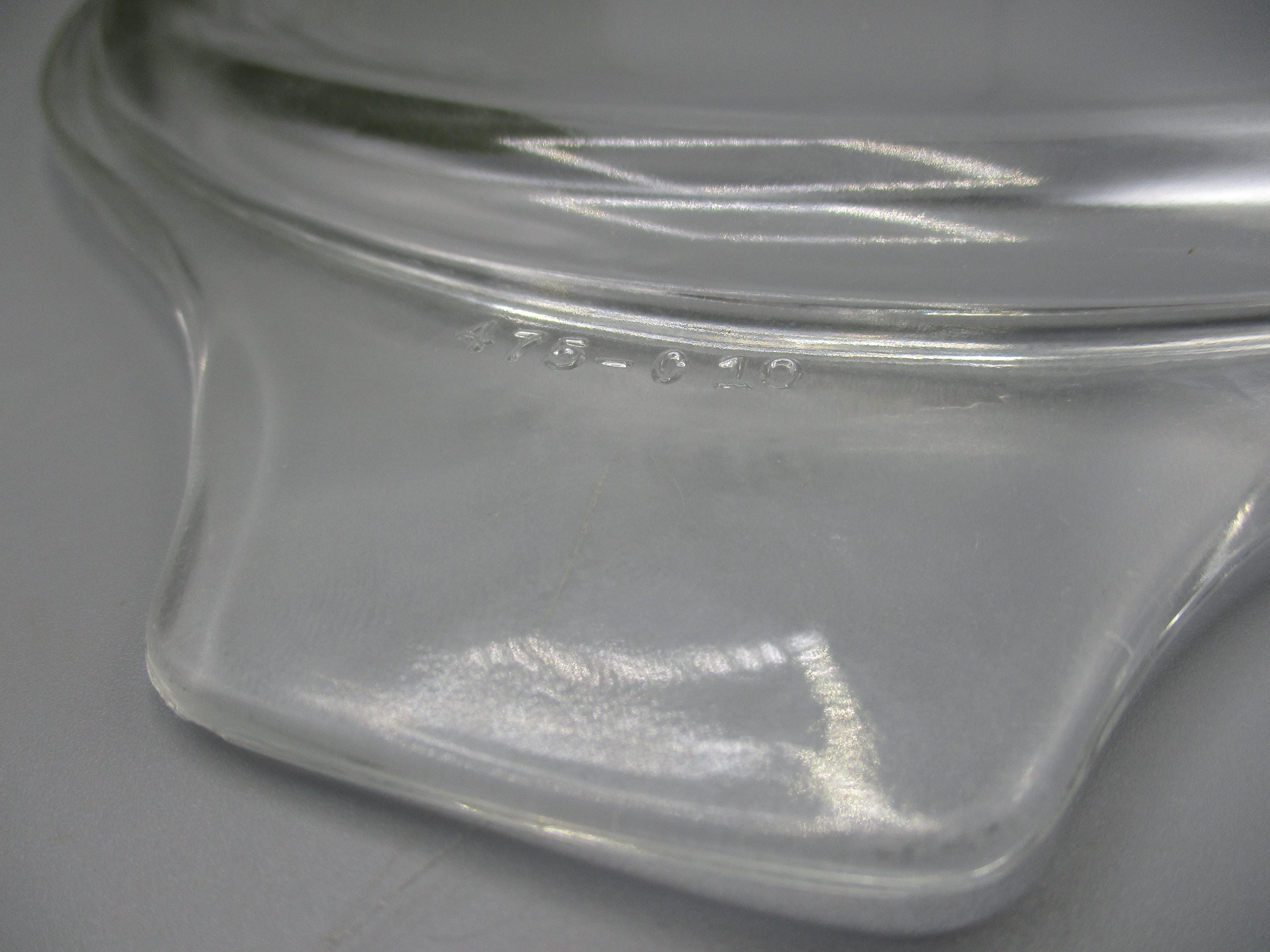
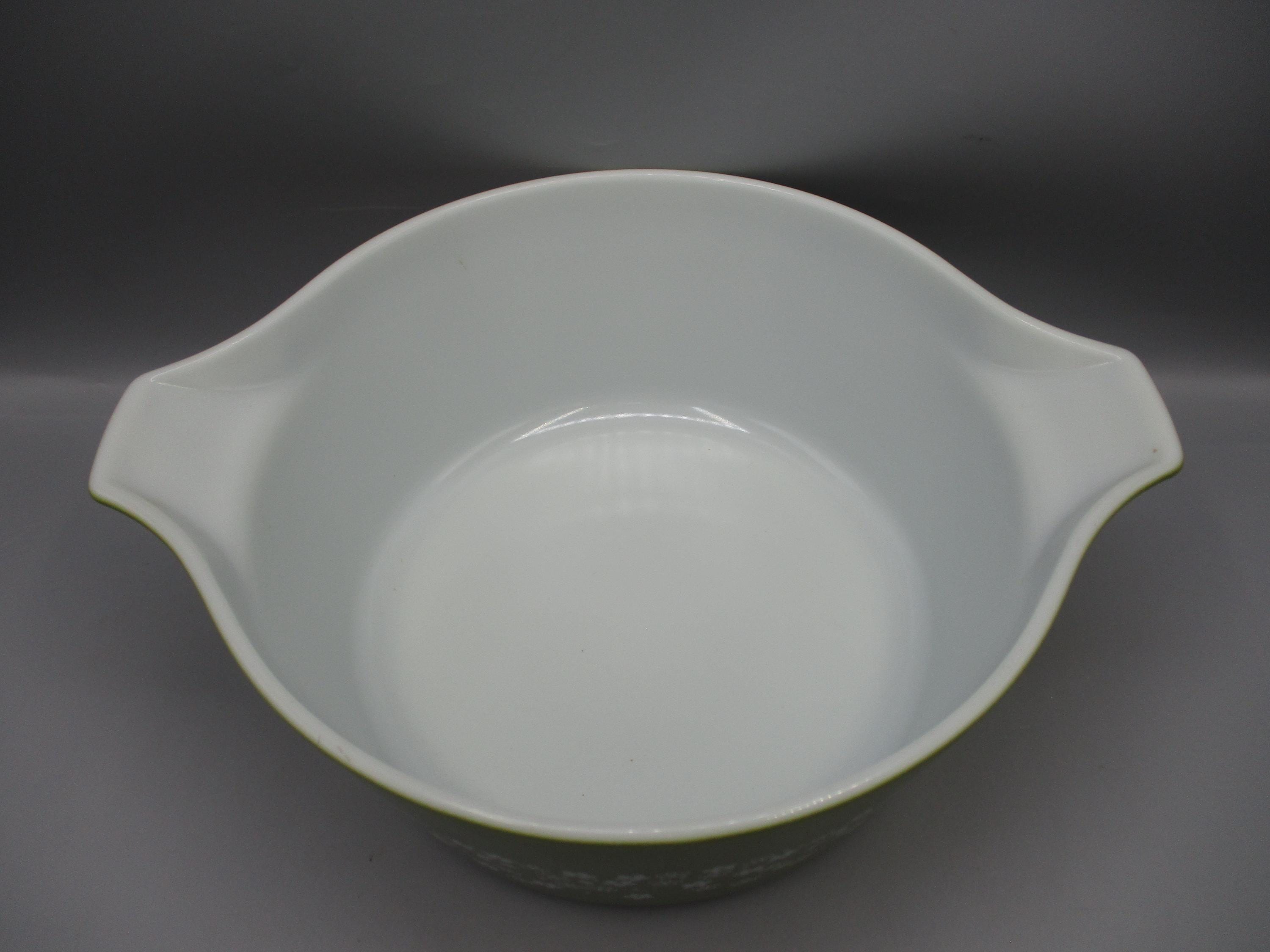
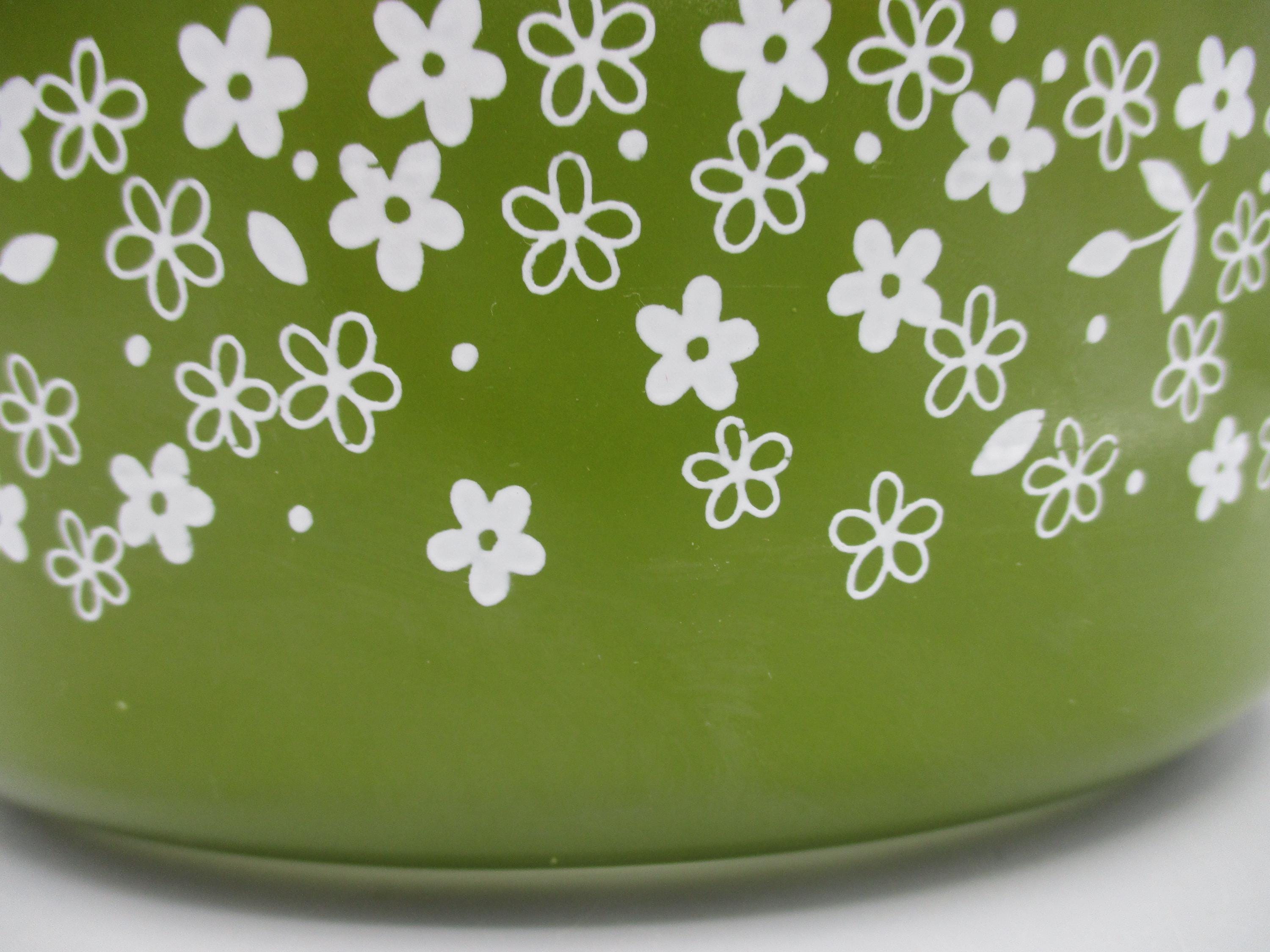

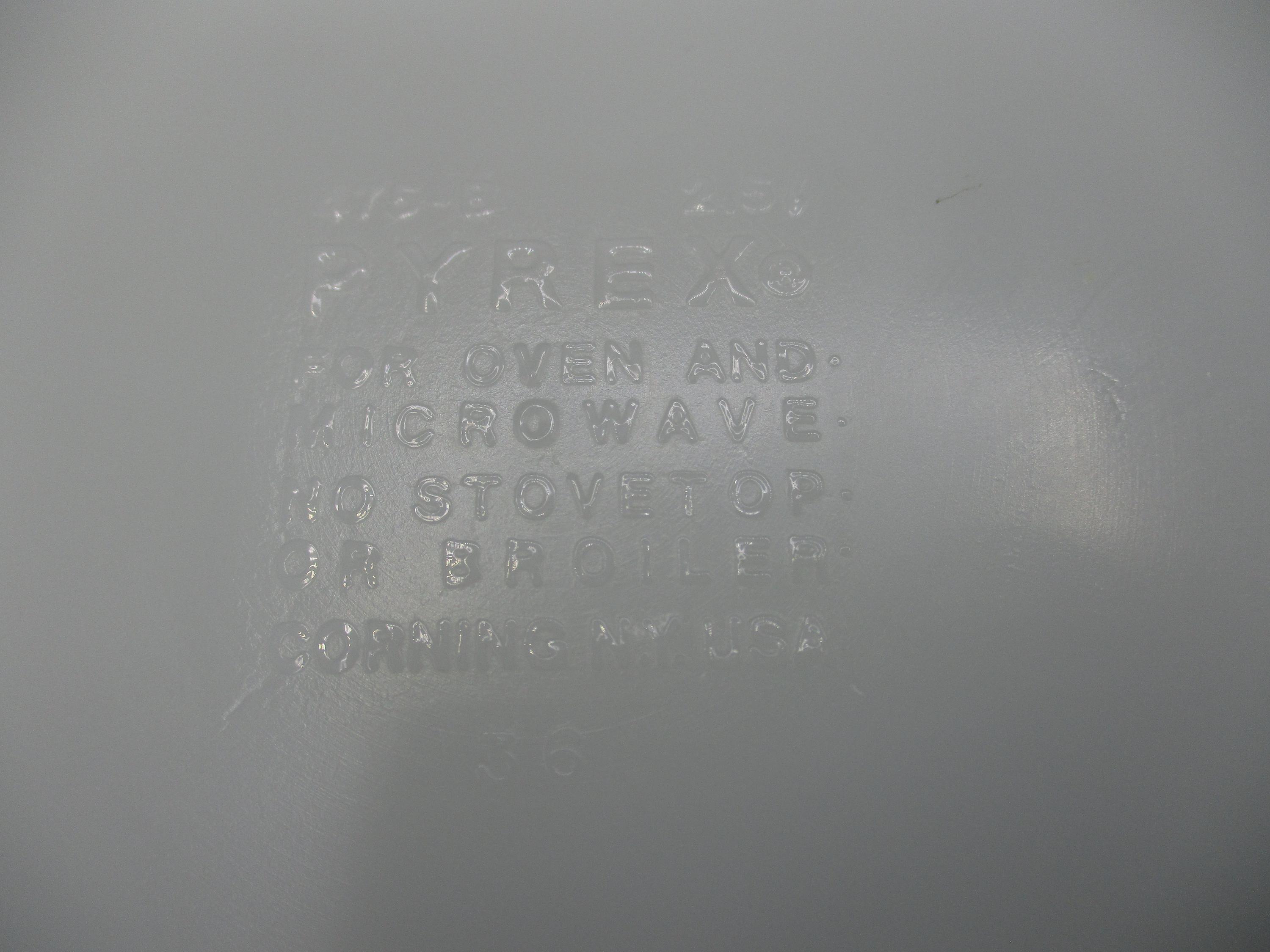
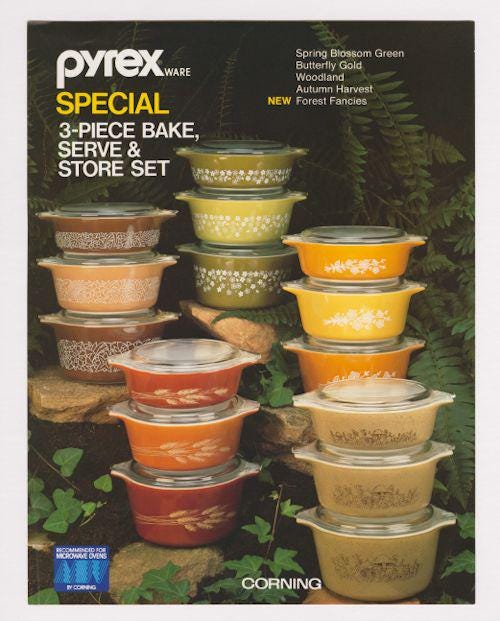
Retro-Modern
1981 Spring Blossom Green Pyrex-Ware Casserole Dish-USA
$30.00
-
DetailsAs a EAPG and American glass collector, MemoryLaneVintiques admires the rich history of Corning Glass Works of Corning, New York USA.
Corning Glass Works was founded in 1851 by Amory Houghton, in Somerville, Massachusetts, originally as the Bay State Glass Co. It later moved to Williamsburg, Brooklyn, and operated as the Brooklyn Flint Glass Works. The company moved again to its ultimate home and eponym, the city of Corning, New York, in 1868, under leadership of the founder's son, Amory Houghton, Jr.
Corning Glass Works became the leading American glass technology factory in 1915 with the invention of the first tempered glass. CGW named the glass composition Pyrex.
The story of Pyrex begins when the factory was manufacturing battery jars, light bulbs and other utilitarian items. Corning Glass Works was looking for new products to develop for its NONEX glass, a heat-resistant glass Corning had developed for use in railway lanterns and other industrial products. In the past, lanterns would often shatter when the warm glass hit the cold outside air. Broken signal lanterns could lead to train accidents or near misses.
NONEX, however, was especially resistant to sudden changes in temperatures and Corning Glass Works, fresh from success with railroad lanterns, was looking for other markets for this glass. One of the scientists working with this directive was new-hire Jesse T. Littleton, a physicist with a degree from the University of Wisconsin.
Jesse and his wife Bessie were discussing the challenge over dinner one evening, when Bessie said her ceramic Guernsey casserole dish had shattered in the oven, after only two uses. She wondered if Nonex might be a better material for baking and asked Jesse to bring her a piece of glass to try. The next day Jesse came home with the sawed-off bottoms of two NONEX battery jars. Bessie used one to bake a sponge cake that was evenly cooked, easy to remove from the glass container, and baked faster than was typical with a metal or ceramic dish. Bessie continued to test NONEX, trying out different recipes, different sizes of glass (custard cups made from lamp chimney tops!), carefully recording her results. You might say that Bessie’s kitchen was the first test kitchen Corning used to develop Pyrex for the market.
Several years after Bessie’s experiment and a bit more tinkering, Corning scientists Eugene Sullivan and William C. Taylor patented a glass formula safe for cooking. Corning Glass Works began selling its new product, called Py-rex. According to company accounts, the name was selected for the nice way it rolled off the tongue and meshed with Corning’s tradition of using “ex” on its glass formulas. However, early ads have “fire-glass” printed beneath Pyrex, showing that Corning was at least partially “playing with pyre.”
Now Corning had a new product, but how to convince American cooks that using glass dishes wouldn’t result in a shattered mess in the oven? To do this, Corning turned to a new authority in American households – the home economist. Women like Sarah Tyson Rorer, founder of the Philadelphia Cooking School, and editor of the influential Ladies’ Home Journal, began testing Pyrex in their kitchens. Their endorsements were highlighted in ads, cookbooks, magazines and newspapers and helped convince dubious consumers to try the new, transparent ovenware.
First sold in hardware stores, Pyrex was soon available at department stores and marketed to the modern cook who valued efficiency, beauty and economy. The shorter cooking time required by glass was an important selling point for a country focused on saving valuable resources for the war. And by 1920, Pyrex was beginning to find its place in kitchens all over America.
In 1958 Corning Glass Works introduced CorningWare the first of "fire-proof" opal-ware. The new kitchenware includes Pyrex clear glass lids with finials or flat covers. CorningWare was a brand with a unique ceramic-glass composition called Pyroceram.
Pyroceram is an opaque, white, glass material commonly used in kitchenware, glass stove tops, and wood stove doors. It has high heat tolerance and low thermal expansion. The glass-ceramic invention contains spodumene, a pyroxene type mineral that will later be used in modern ceramics to provide resistance to thermal shock and expansion. So essentially, what everyone knows today as "thermal insulated glass" all started with CorningWare. The glass-forms are identified by the Corning factory with the cast molding numbers. Corning designers name the patterns, colors, as well as what serving sizes. With the invention in 1957, the glass designers created the casserole and mixing bowls 3 or 4-piece line named Cinderella. The naming of these new "PyrexWare" sets had much to do with the popularity of the Cinderella story current at the time both in film and on Broadway. Corning marketers also hoped the underlying theme of a "coveted glass object" would have a subliminal effect on consumers.
Corning's Pyrex kitchenware designers decided on few new shapes and models to revive the 1950's American kitchen with Cinderella. The bowls came without covers and primarily were a set of four nesting mixing bowls, with new round shapes instead of the traditional square casserole dish shapes following the bowl sets the next year in the same pattern. Cinderella's 3-piece casserole sets came in 3 capacities 1-1/2 qt, 2-1/2 qt. and a 4 qt. with flat lids that made them stackable. The mixing bowls came in 4 different capacities originally being 1-1/4 qt, 1-1/2 qt, 2 -1/2 qt and then a 4 qt.
The mixing bowls differed from the original nesting set by the addition of diametrically opposed flares in the rims which gracefully taper from the sides of the bowl, serving as a convenient clutch-able handle to also serving as a pour spout. Their designer was the legendary John Phillip Johnson.
The popularity of the fairy tale Cinderella patterns faded from the American kitchens. The Pyrex or Cinderella or PyrexWare sets, were a consumer favor right up to the very last pattern and collection with the release of the pattern Colonial Mist, in 1983.
This is ONE of the THREE casserole dishes in the Cinderella 3-piece set.
Introducing the 1981 Spring Blossom Green 2-1/2 qt Cinderella Set #475B with original clear lid.
Excellent Condition and worth every nickel!
MemoryLaneVintiques sanitizes all glassware, glazed pottery, jewelry and resin cast items before packing for shipment....100% Guaranteed!
STANDS IN PHOTOS NOT INCLUDED WITH PURCHASE OF THIS ITEM!
ETSY INTELLECTUAL PROPERTY POLICY
As a venue for artists, designers, and makers, Etsy takes intellectual property rights very seriously. We comply with intellectual property laws and industry best practices in order to maintain the integrity of our creative marketplace. This Intellectual Property Policy explains how we address allegations of infringement: how authorized parties can submit reports of infringement regarding content on our marketplace, and how Etsy sellers can respond when their listings or shops are affected by a report.
ANY COPY AND PASTING OR PLAGIARIZING OF MATERIAL
ON MEMORYLANEVINTIQUES IS SUBJECT TO ETSY INVESTIGATION AND PENALTIES!
MemoryLaneVintiques researchers also protect our shop from Intellectual Property Theft by researching for violators of our material. Be respectful!
Chad & Jennifer Johnston (August 2024)
